Film is an entertainment medium that, by its very nature, tends to reward the viewer in rewatch. Sometimes movies even reveal to us how we’ve grown or changed since we last saw them. Our own Max Robinson reassesses old favorites, seasonal classics and the occasional oddball lost under the couch in his monthly column, Stale Popcorn.
Last weekend was Valentine’s Day, the time honored holiday of love and flowers. In that spirit, I want to talk about Little Shop of Horrors, Frank Oz’s big screen adaptation of the stage musical adaptation of the Roger Corman B-movie. This is one of my all-time favorite films, and the only live action movie-musical I have any affection for. That isn’t me throwing shade on movie musicals, but Little Shop is a flick that really gets its hooks into you; the songs are catchy, the characters feel real, and Levi Stubbs voices a catty plant monster. The original stage production took Corman’s weird, if forgettable black comedy and transformed it into a brand new creature, half super broad comedy, half Faustian temptation drama by way of Sweeney Todd. Oz’s movie version had the unenviable task of retrofitting a stage production to the wider dimensions of film, and the end result is a movie that doesn’t feel too beholden to its Broadway roots (pun on loan from the David Uzumeri Society).
I have been and will always be a sucker for New York movies, and Little Shop of Horrors is a pretty great one despite the fact that it’s filmed entirely on the Pinewood Studios soundstage. The transparent fakeness of the movie’s brick-faced tenements and garbage strewn streets wouldn’t work if Little Shop weren’t operating under a weird psuedo-reality to begin with. Skid Row, with its permanently wet asphalt and broken windows, is less New York and more the myth of New York. It’s Burton’s Gotham City three years before Batman. Despite how off it all looks, the film’s locations feel like real places you could visit and walk around in. Mushnik’s flower shop and Audrey’s apartment all feel lived-in, buried under an inch of street grime and flaking paint.
The film’s use of a Greek chorus, in the form of schoolgirl dropouts Crystal, Chiffon, and Ronette, is one of the only times that particular device has ever really worked for me in a modern context. (It’s also worth noting that Disney wisely swiped these characters for another Alan Menken project, Hercules.) Little Shop‘s central conflict is really the desire for upward social mobility; Rick Moranis’ Seymour and Ellen Greene’s Audrey are children of the slums who dream of a life together in idyllic suburbia. Even though they aren’t our main characters, it is interesting that this is a movie where three African-American women are front and center at pretty much all times. They just happen to be narrating the apocalypse. The movie’s shifting visual representation of the girls even plays into Seymour’s dream of a higher rung on the economic ladder. When we see the girls during musical sequences, they’re in lavish sequined outfits. Any time they actually interact with a character in “reality,” they’re in drab street clothes expected of Skid Row.
Slicktalking venus fly trap Audrey II and sadistic dentist Orin Scrivello (DDS), as Little Shop‘s bad guys, are essentially cartoon characters with these really sinister underlying dimensions. Scrivello (Steve Martin in what I’d argue is one of his best performances period) is a walking joke, but his verbal and physical abuse of Audrey isn’t played for laughs at all. He gets off, literally, on hurting people; it’s frightening. Levi Stubbs of the Four Tops plays Audrey II with a Little Richard-esque pissiness that masks a cruel and calculating intelligence. Motivated only by his hunger for human flesh and instinct for self-preservation, Audrey II is everything the selfless Audrey I isn’t.
Visually, Oz pulls off some really neat flourishes here. Lyle Conway’s escalating series of elaborate Audrey II puppets (from cute potted plant to room-sized monster) gives him (it?) increasingly more menace as the film progresses. On this viewing I was struck by the “Chooz” gum sign that repeatedly pops up behind Seymour during moments of emotional turmoil, a cute bit of background detail in a movie full of great texture.
A big part of why Little Shop of Horrors works is that, while being a very colorful musical, the characters are grounded in very human motivations and desires. Seymour’s desire for Audrey and the life she represents allows him to slide into the emotional grey area offered by Audrey II. Seymour is willing to kill, albeit semi-indirectly, “bad people” on the orders of a hungry monster to gain the celebrity status that he thinks will make him worthy of Audrey. The best scene in the film is a little one, when Seymour confronts Scrivello in his office with a gun. Scrivello laughs him off, but then begins to suffocate due to an overdose of Nitrous Oxide from his fetish gear gasmask. Then he realizes that Seymour is willing to watch him die.
“What I’d ever do to you?”
“Nothing. It’s what you did to her.”
“Her? Her who? Ohh. Her.”
Scrivello, always the victimizer and never the victim, is scared and confused when he dies. It’s a powerfully vulnerable moment for a villain who, minutes earlier, sang about how much he loves to shoot puppies with a BB gun.
The interesting wrinkle in revisiting Little Shop of Horrors is that there are now two very different versions of the film that exist: the original theatrical version that I grew up with and the 2012 director’s cut. While the original ending sees Seymour killing the plant and running off to the white picket fence, one car garage home of his dreams with Audrey, the newly restored director’s cut has a fundamentally different third act that sticks to the stage production’s downer ending. Audrey dies, telling Seymour to feed her to the plant. Seymour himself is eaten soon after. Millions of Audrey IIs are purchased across the country, and “Don’t Feed The Plants” plays over an impressive special effects spectacle finale of New York being laid to waste by the fully matured monsters. This restored ending not only looks great, it feels right. There’s rewarding, caustic irony in Audrey getting to live her dream of being “Somewhere That’s Green.” The test audience-approved happy ending gives us what we want, but not what we need. Seymour doesn’t deserve a happy ending; he killed people in the name of fame and fortune. His moral failings doom himself and, by extension, mankind. It’s bleak, it’s depressing, it’s honest.
Underneath its charming facade and head-bopping Alan Menken musical numbers, Little Shop of Horrors is a uniquely American tragedy. It’s certainly no coincidence that the film’s finale starts with Crystal, Chiffon, and Ronette in front of an American flag backdrop a la Patton and ends with a Statue of Liberty in the possessive grip of the titual florae.
Have thoughts on this film or suggestions for future installments of Stale Popcorn? Post a comment below, or hit us up on Twitter or Facebook!

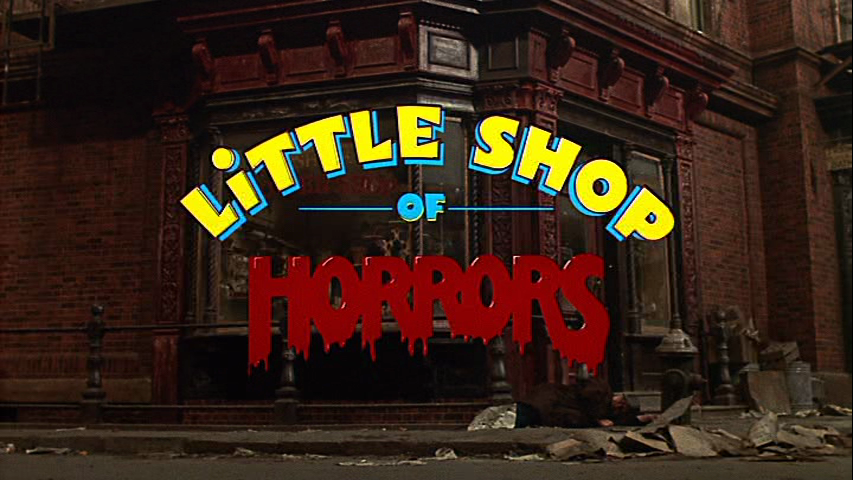
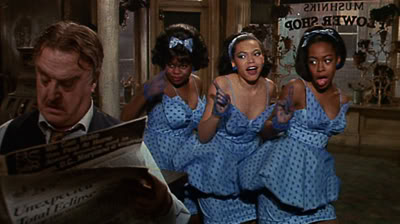
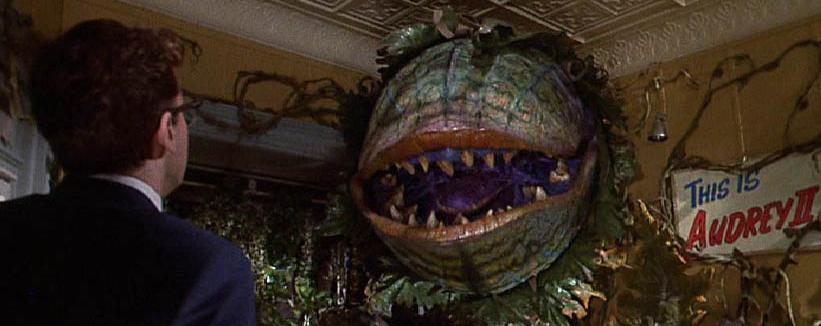
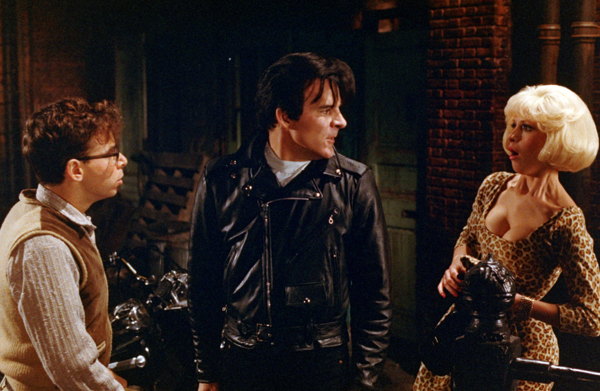
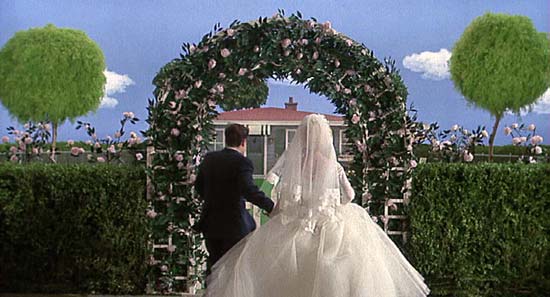
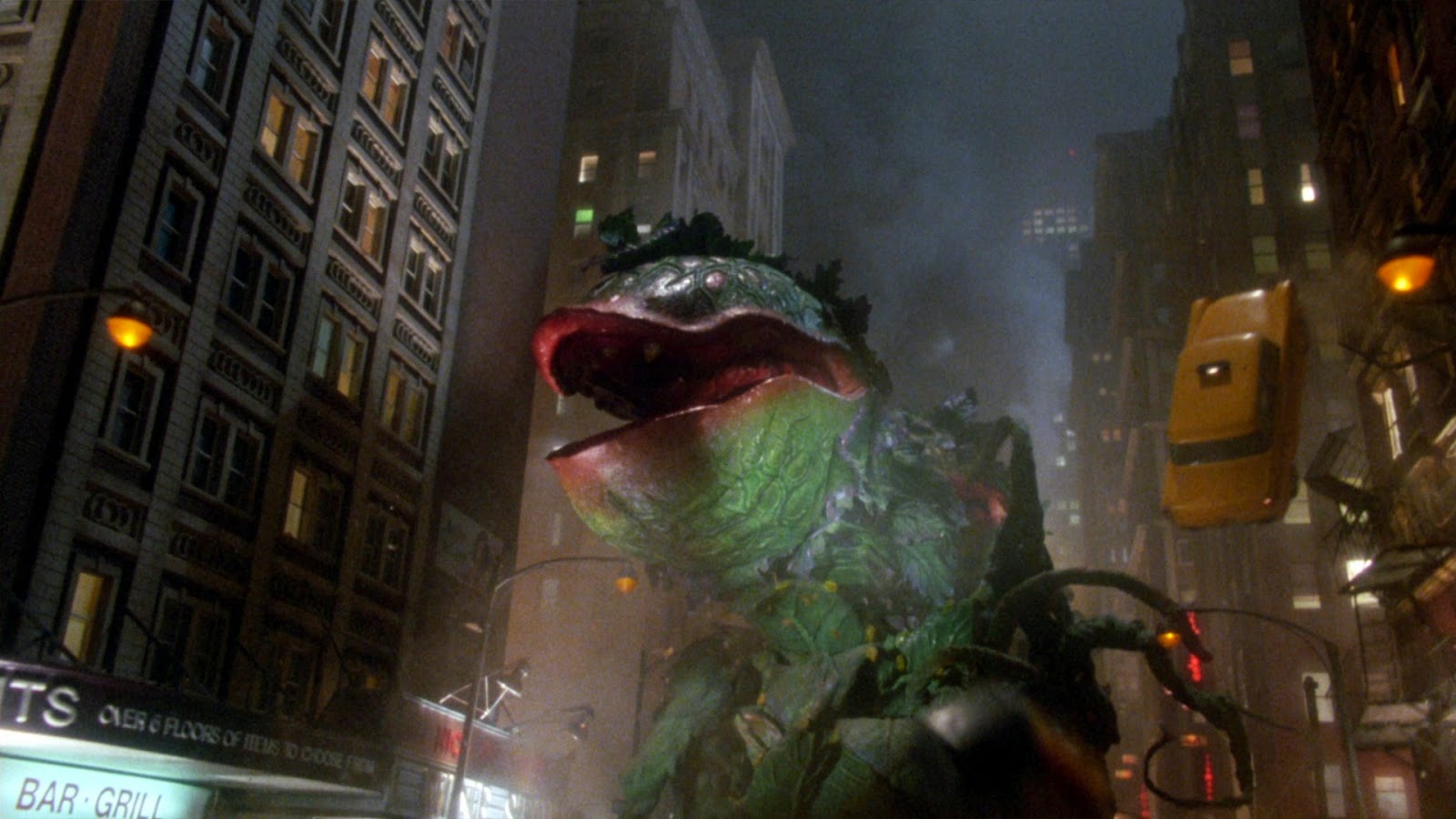


so gooooood
Great write up! FYI some of the other deleted scenes, like the song “The Meek Shall Inherit” have turned up online & can be seen here. Why they weren’t included on the disc is anybody’s guess.
http://mondomusicals.blogspot.com/2012/12/little-shop-cuttings-sprout-online.html